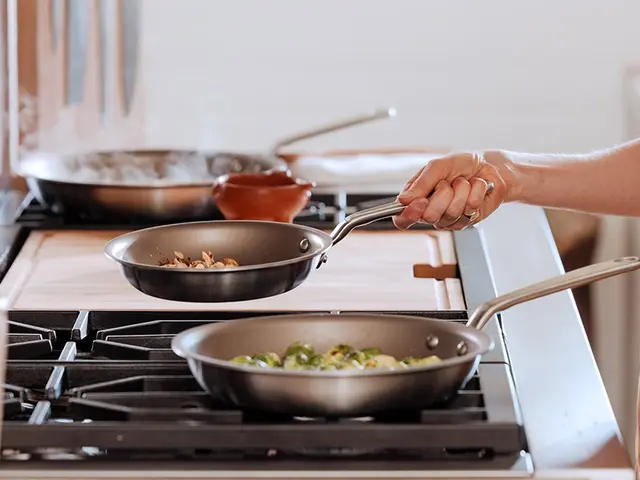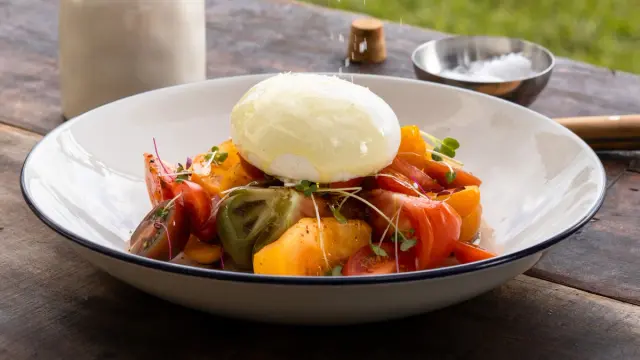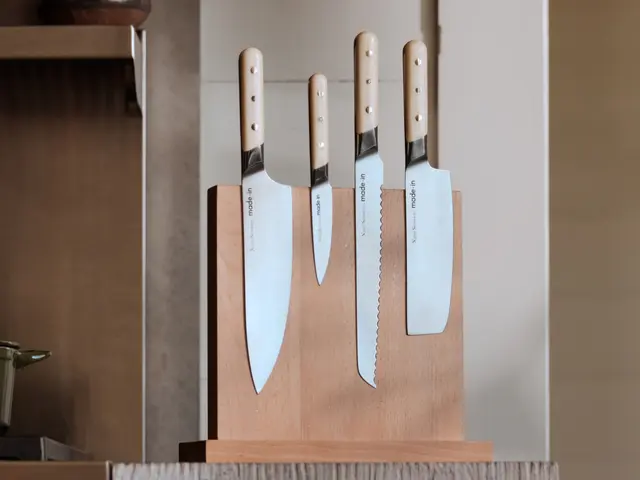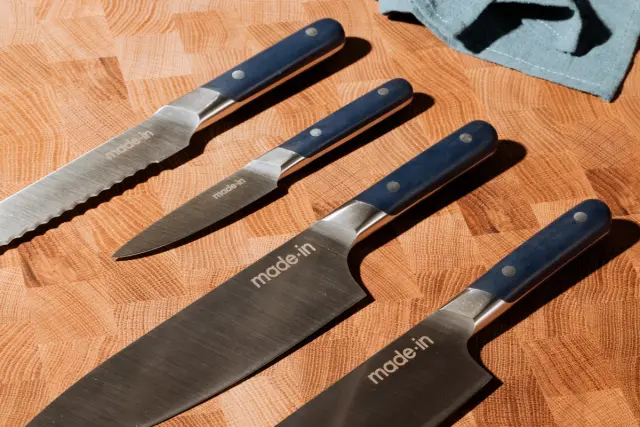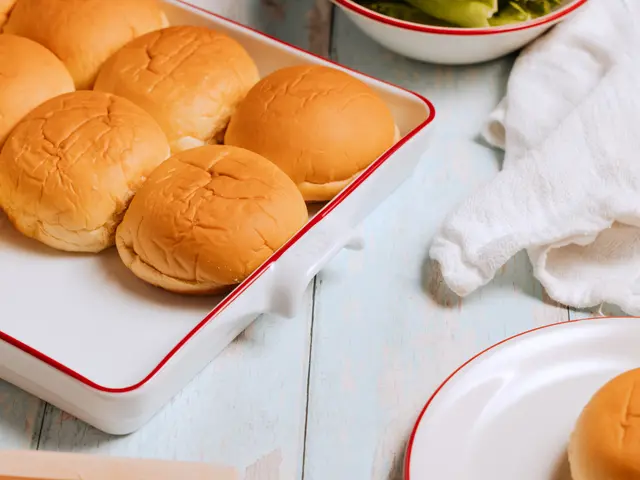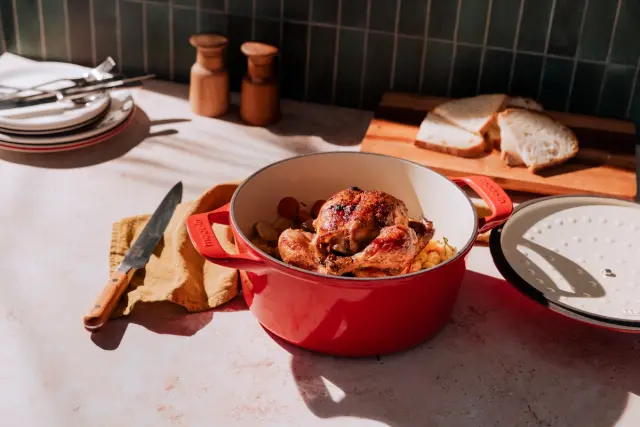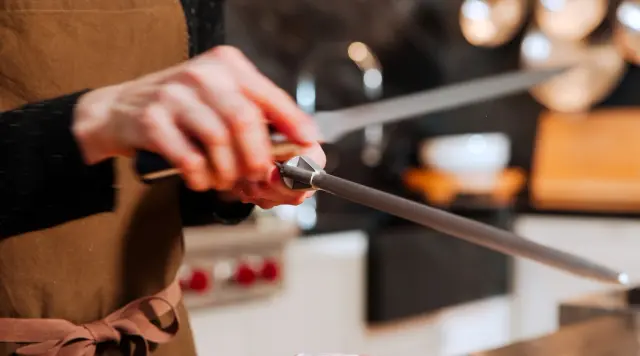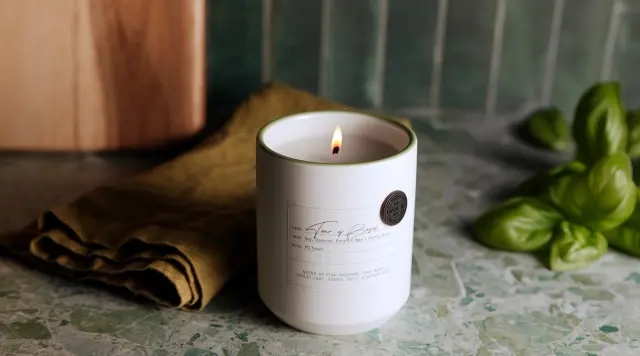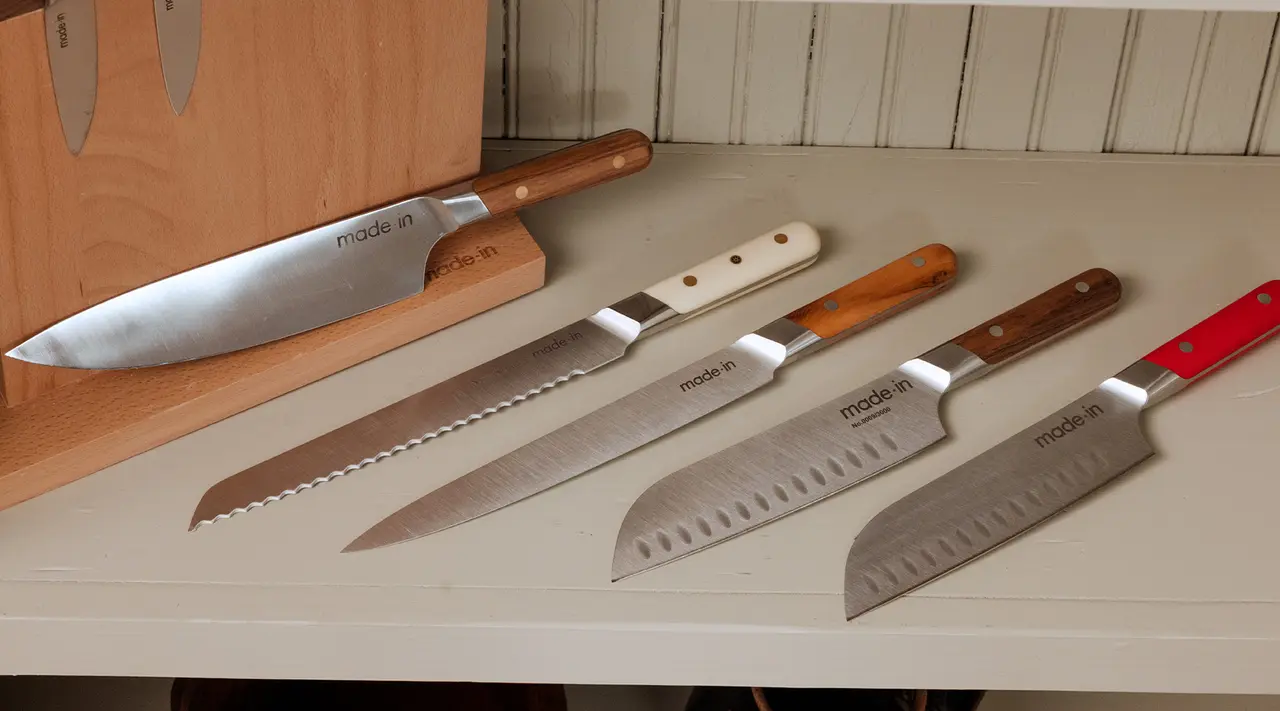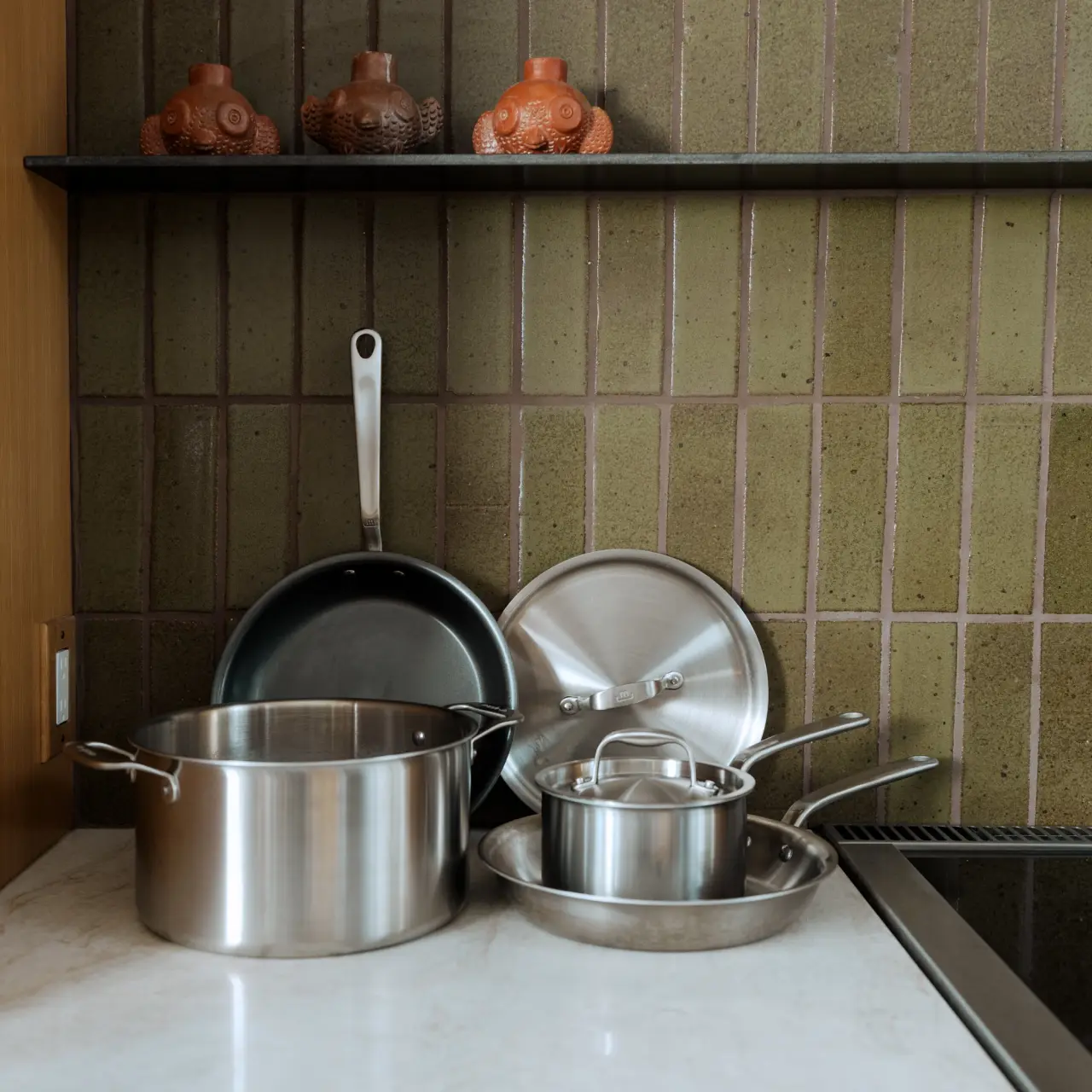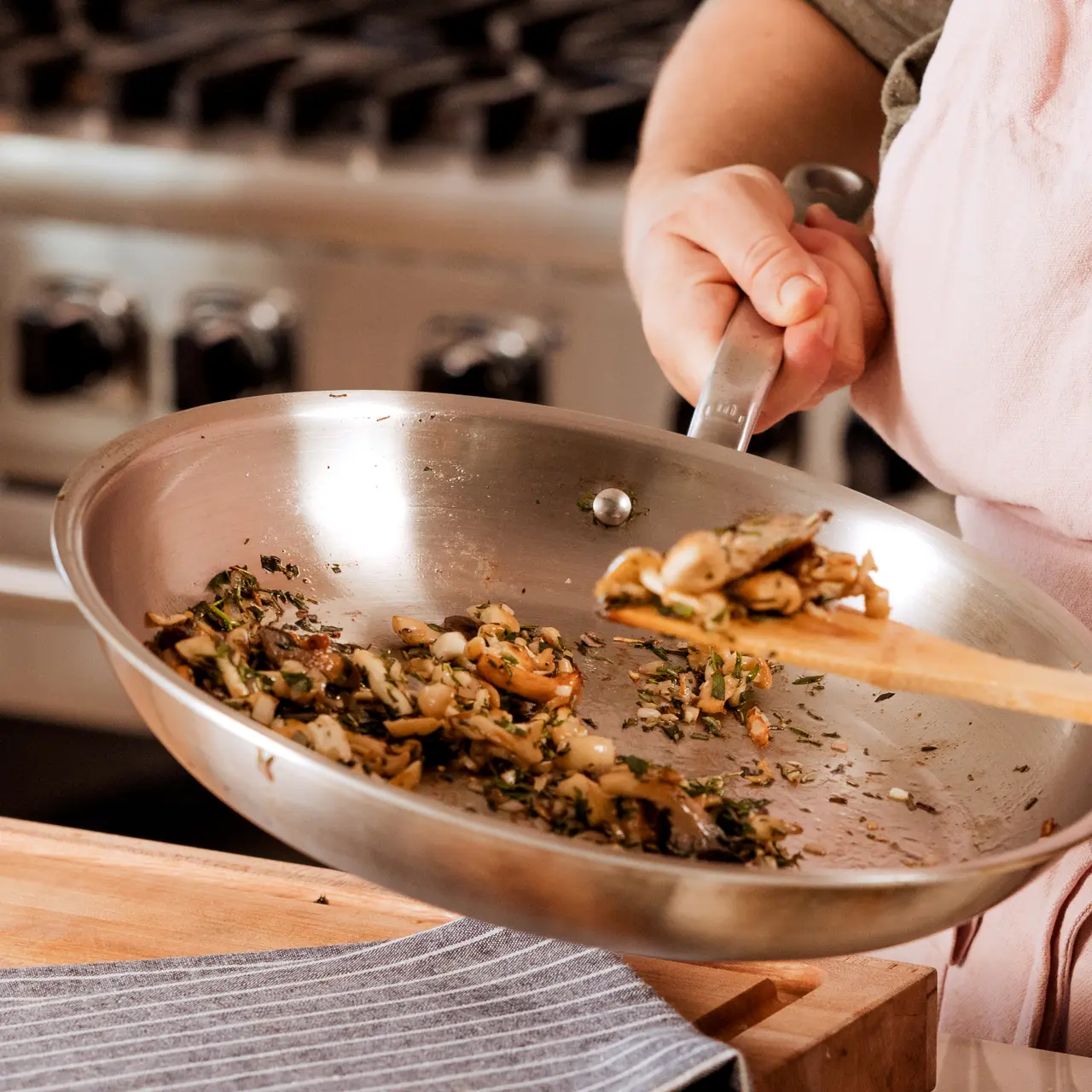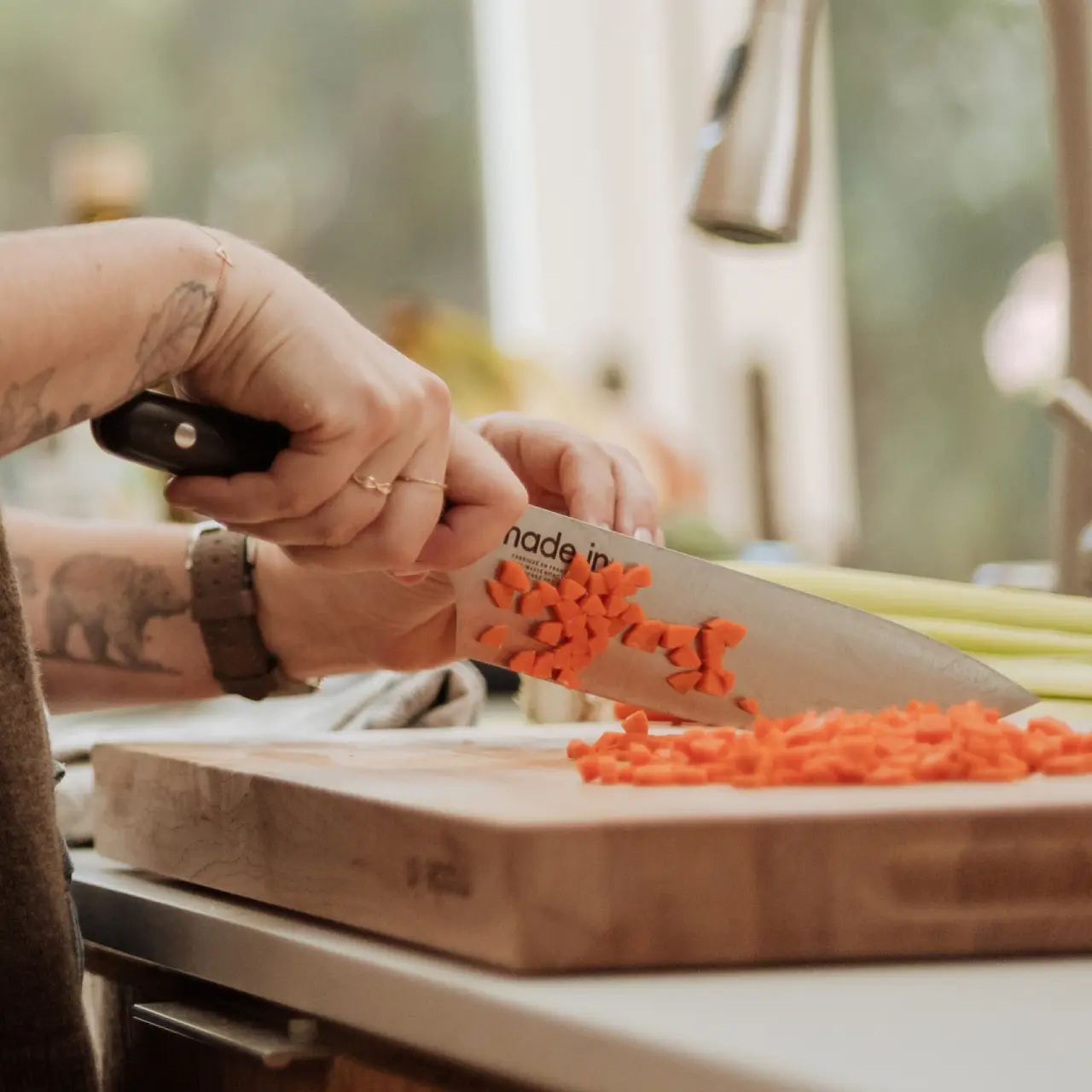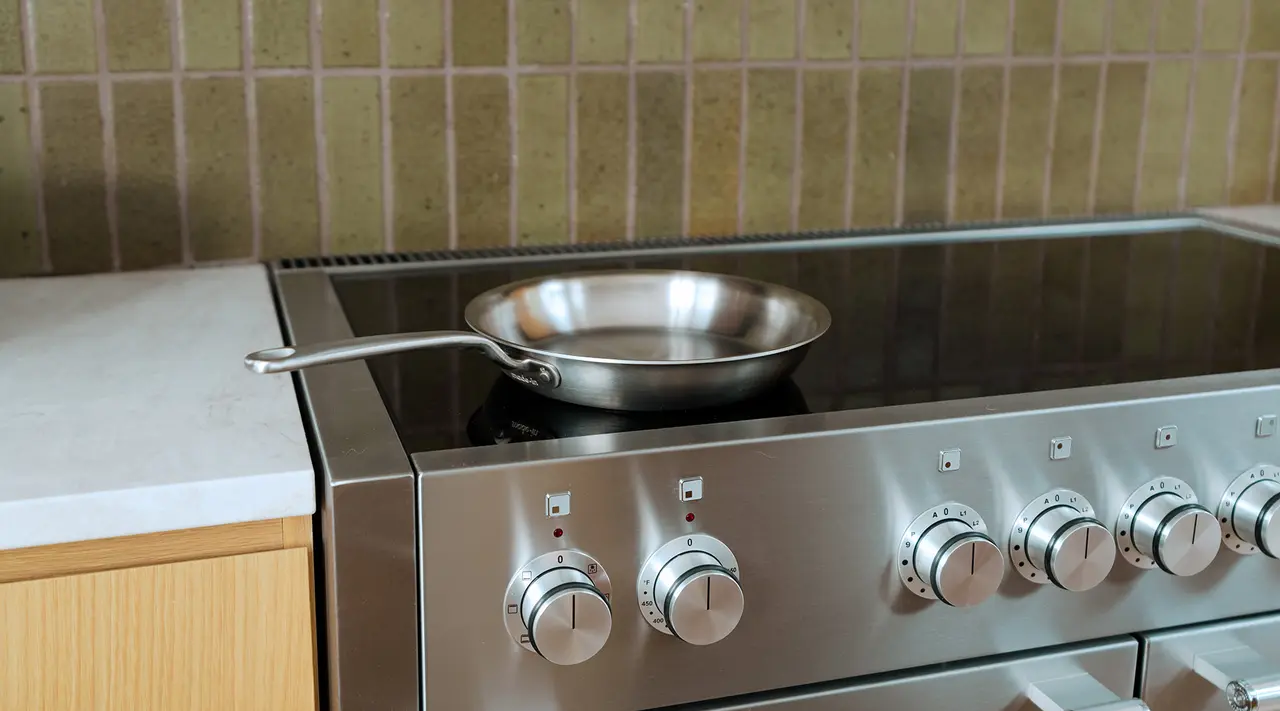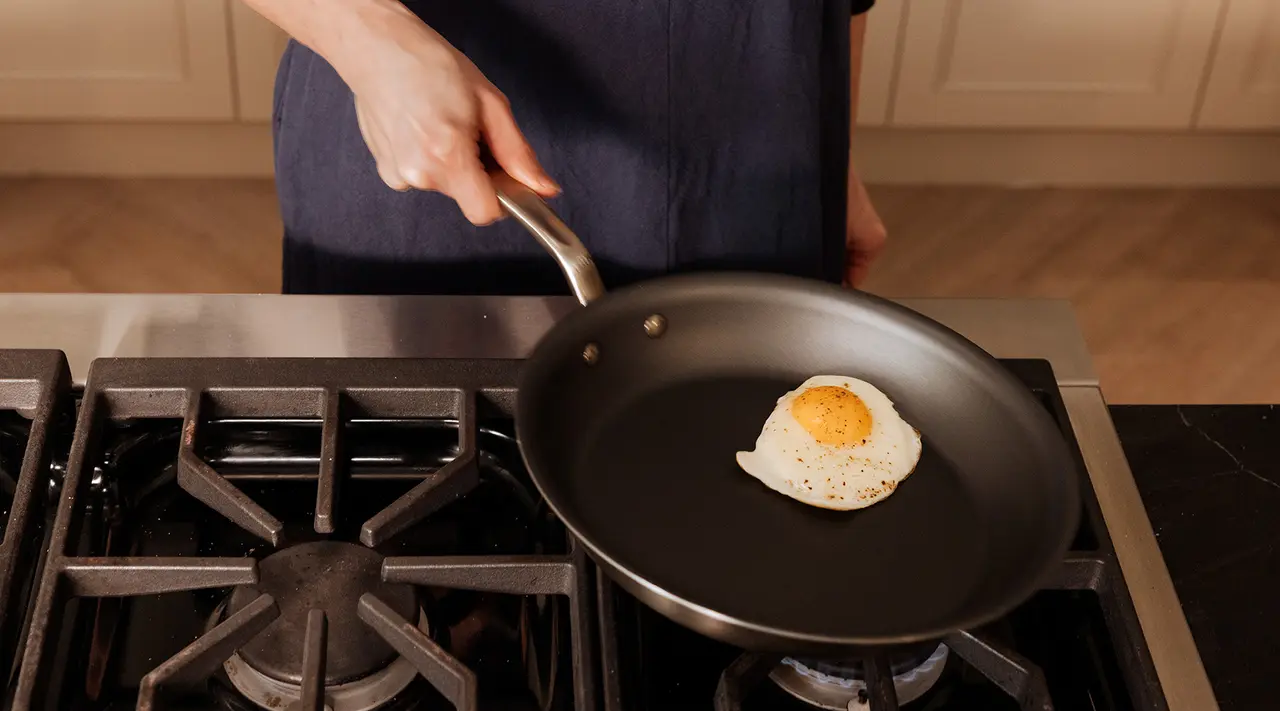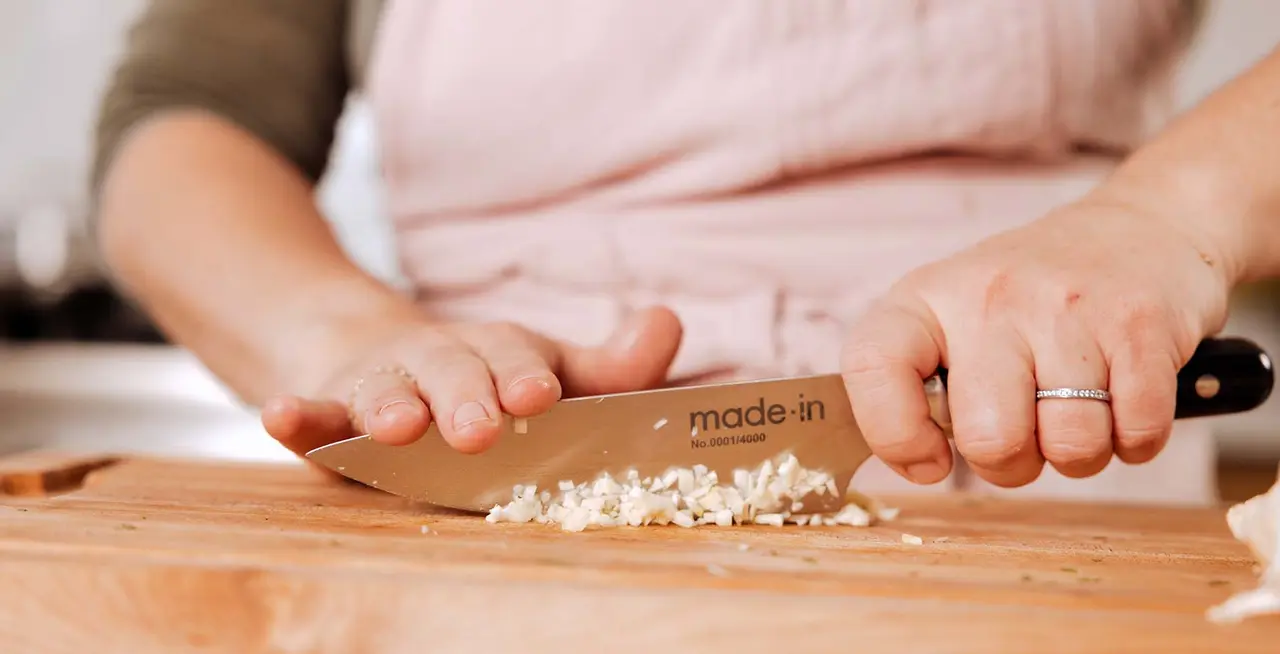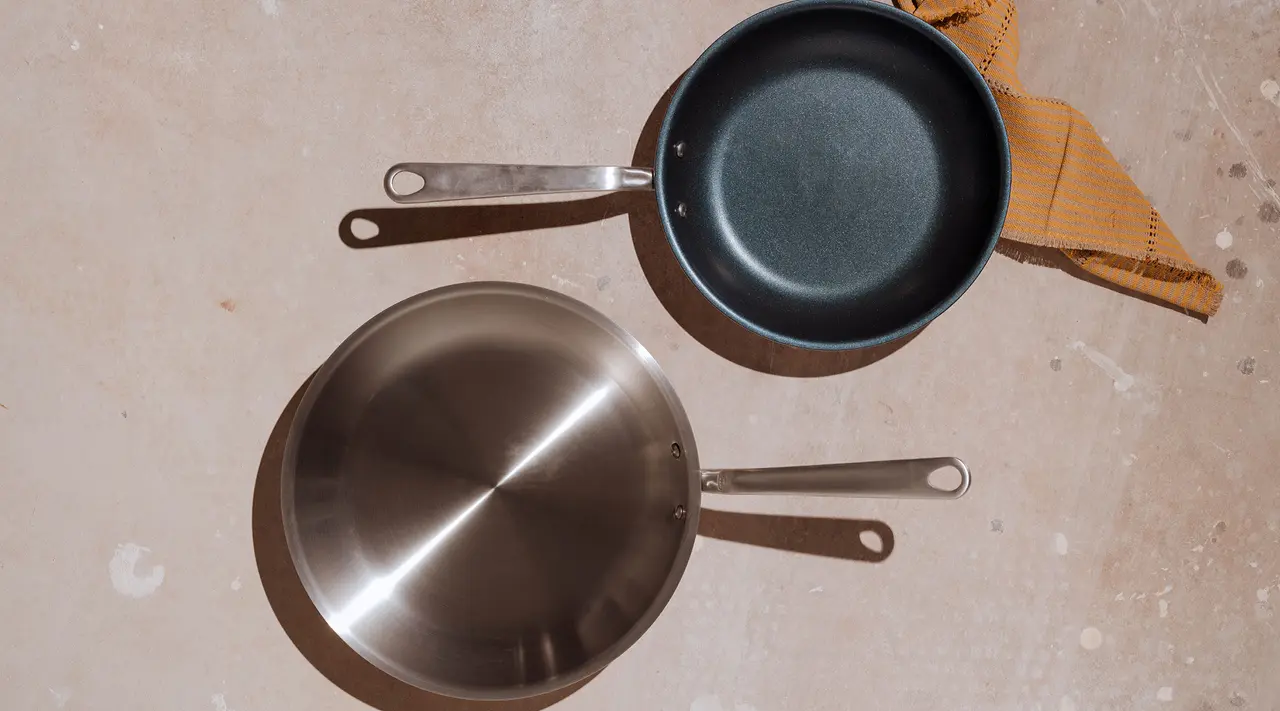From different types of steel to wide variances in knife-making processes, it can be hard to guarantee you're getting the high-quality knife you need. If only there was some sort of rating system so that professional chefs and home cooks can easily compare types of kitchen knives!
Luckily, the Rockwell Hardness Scale is just that: used to determine the precise strength and sharpness of steel for knives. When looking for the best blade, this scale can tell you everything from which kitchen knife is made from harder steel to which offers a sharper cutting edge. Let's get into it.
What Is Rockwell Hardness?

The Rockwell Hardness Test was created by Stanley P. Rockwell in 1914 as a new way to measure the steel ball bearings manufactured at his company. This test was, eventually, found to measure the strength of any type of metal, as well as non-metallic materials—including knives.
Today, the Rockwell Hardness Scale is the standard method used to measure and determine the strength and quality of a kitchen knife blade.
How Is it Measured?
The Rockwell Hardness Scale determines the hardness of a metal by measuring the depth of an indentation made after a conical diamond impacts a piece of metal. Diamond is the hardest natural substance on the planet, making it the perfect choice to use for the test impact.
The test is performed twice.
- During the first test, a minor amount of pressure is applied to the metal and the indention is measured.
- During the second test (in the exact same position), the pressure is then increased to about 300 pounds and the diamond-shaped indentation is measured again.
- The difference between the first indentation depth and the second indentation equals the hardness of the knife blade.
Since the hardness of steel does vary greatly based on the knife steel type used, many manufacturers offer a hardness range (i.e. "58+" or "58-59").
But What Do Rockwell Score Ratings Mean?
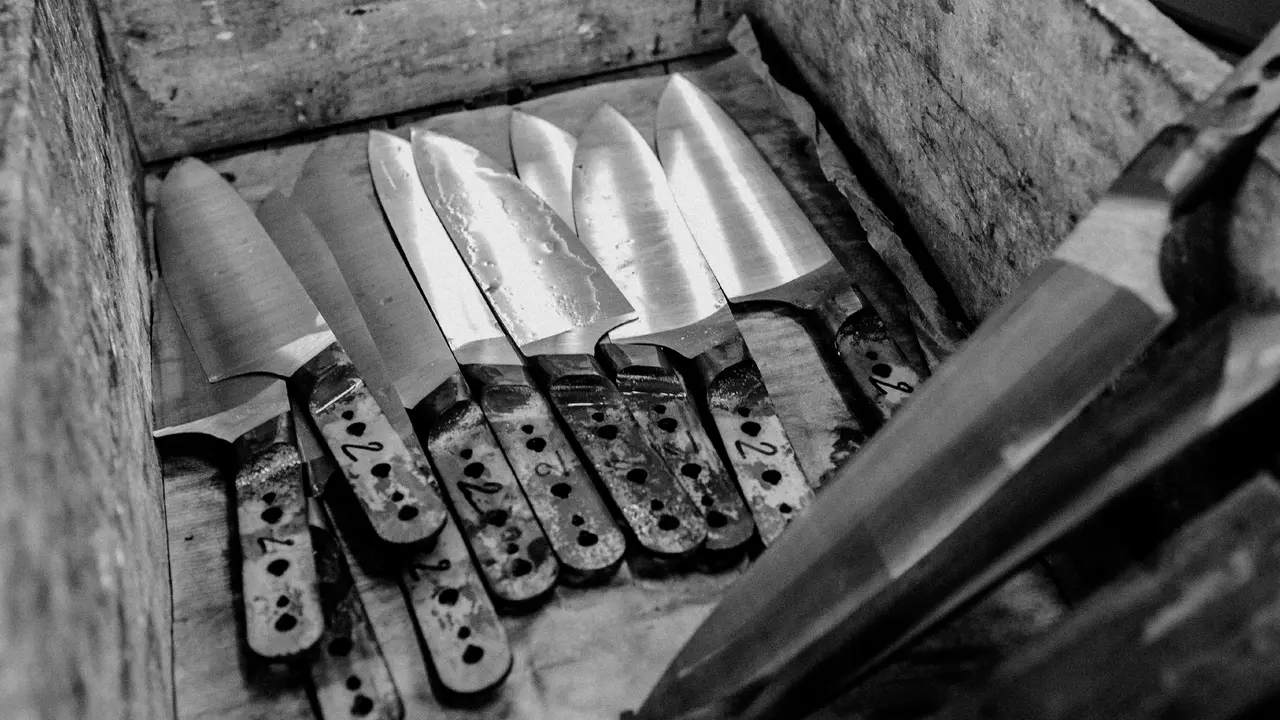
In summary, the number associated with the Rockwell Hardness Scale determines how hard the knife steel is. Softer steel is more durable but loses its sharpened edge faster, while harder steel stays sharp for longer but is more fragile and prone to chipping.
If you're just looking for what a Rockwell Score means, there you have it. If you want to get a little more granular, read on.
Interpreting Different Rockwell Scales
There are actually 30 different Rockwell scales that are used to determine the hardness of a kitchen knife. They all use a unique combination of testing variables, from different forces exerted on the steel to different materials used for indentation.
The Rockwell scale uses letters of the alphabet to denote different levels of ratings. The most important (and commonly used) Rockwell scale for measuring the steel of knives is the Rockwell C Scale (also called an "HRC score"), which measures the steel’s resistance to permanent distortion.
To see this in action, assess the HRC scores of a typical axe with a sharpened edge—which should be around 50 HRC to cut through wood without issue—and the HRC scores for kitchen knives.
- An HRC score below 52 means that the knife blade is way too soft to be used as a kitchen knife.
- Stainless steel that has an HRC rating between 52-54 is considered to be somewhat soft, but could be used to make an inexpensive kitchen knife.
- The best rating for kitchen knives is an HRC score between 59 and 64. Any score above this would make the knife blade extremely brittle, which means that the blade could actually break while using it.
Professional chefs as well as experienced home cooks will want to choose a kitchen knife that has an HRC rating of 55 and higher for best results when cooking. For reference, all Made In Knives have an HRC score of 58+.
Do HRC Ratings Actually Matter?

The rating can't mean that much—can it? (Spoiler alert: it can.) To demonstrate the differences between high and low HRC rated knives, we put together qualities you can expect of each.
Qualities of Knives With Low HRC Ratings
- Kitchen knives made with softer stainless steel are more durable.
- Knives with ratings in the low 50s will not hold its sharp edge as well as those with higher RC ratings, which will require more frequent sharpening.
- Knife blades with low RC scores are easier to hone or sharpen and require less specialized maintenance.
- A kitchen knife with an HRC in the 50s offers higher tensile strength, or the resistance a material exhibits to breaking under tension.
Qualities of High RC Rated Knives
- A kitchen knife made from harder steel is able to better maintain its sharp edge.
- If the steel blade is too hard, it will become brittle and more likely to break during use.
- Knives with RC scores over 65 tend to be more susceptible to damage.
- Blades made with harder steel will take longer and more effort to sharpen.
Ready to Shop?
Because our French-made Knives all boast an HRC of 58+, you know you’ll be getting a strong and durable knife that’s still easy to sharpen and maintain. Through knowing more about the Rockwell Hardness Scale, you’re now able to confidently shop for a kitchen knife that makes mincing, slicing, dicing, and prepping ingredients a breeze.
